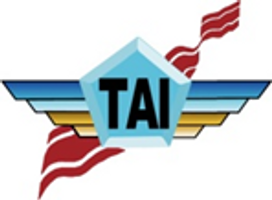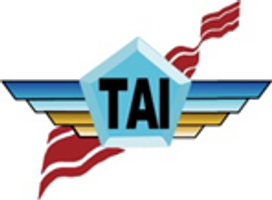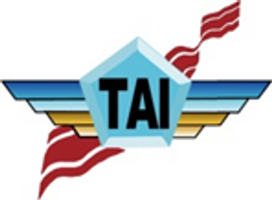Title Page
-
Site conducted
-
Conducted on
-
Prepared by
-
Location
Safety Management Systems
Management Commitment
-
There is a documented aviation safety policy.
-
The policy includes safety reporting.
-
The safety policy clearly defines unacceptable behaviour.
-
The safety policy is signed by the Accountable Executive (AE).
-
There is a process to review the policy to ensure it remains relevant and appropriate to the organization.
-
There is a process to review and update the organization’s safety objectives to ensure they remain relevant and appropriate.
-
There is a documented Continuous Improvement process based on the outcomes of the various SMS processes, such as the effectiveness of safety risk management activities, audit results and analysis of SPI data.
Safety Accountabilities and Responsibilities
-
The organization has identified an Accountable Executive.
-
Accountability for safety performance of the organization is documented in the Accountable Executive’s job description.
-
The responsibilities of each position with respect to the safety performance of the organization are explicit.
Appointment of Key Personnel
-
There is a safety manager who is responsible for the effective administration of the SMS.
-
The Safety Manager is at a level in the organization that enables him/her to carry out his/her duties effectively without conflict of interest. <br>
Emergency Response Plan
-
There is a documented Emergency Response Plan (ERP) ensuring proper coordination with the ERP of other organizations interfaced with during the provision of its services.
Safety Risk Management
-
There is a process to determine the possible consequences associated with each identified hazard.
-
There is a process for assessing such consequences for their risk potential in terms of likelihood and severity.
-
There is a process for establishing and implementing appropriate mitigation actions to control risk to a tolerable level (i.e. ALARP).
Safety Assurance
-
There is a documented process to develop SPIs and SPTs in support to the organization’s safety objectives and target areas of significant risk.
-
"There is evidence that the organization has implemented SPIs in accordance with the documented process. Note: Provide specific examples of SPIs and SPTs implemented by the organization."
-
The organization has established an Internal Audit Programme (IAP) to assess the full scope of its processes.
Management of Change
-
There is a formal process to proactively identify and manage any changes that could impact safety of the organization.
-
Safety Promotion
-
There is a documented SMS training plan that contains initial and recurrent SMS training.
-
There is documented evidence that each individual in the organization, to include the SM and AE, has been trained to a level commensurate with his/her responsibility and involvement in the SMS.
-
There is a documented safety communication strategy that enables the organization to communicate safety objectives, SMS policy, and critical safety information.
-
Does the organization have a process to conduct assessments, at appropriate intervals, to identify regulations, standards, approvals and exemptions that are applicable to their operations and the procedures implemented by the organization to comply with them.
ERP
-
Has the organization established a plan detailing the procedures to be followed in the event of an accident or incident involving substantial damage to aircraft or injury to passengers, crew members or persons on the ground?
-
Does the organization's ERP include procedures for dealing with other forms of emergencies that could affect personnel or facility safety, as well as business continuity, such as utility failures, natural disasters, medical emergencies, contagious illness outbreaks, bomb threats, or workplace violence?
-
Depending on the nature and location of the accident, procedures for the organization and/or flight crew to notify the appropriate authorities in the State of the operator and in the State where the accident occurred, and to seek medical assistance, as required;
-
Provisions to establish an Emergency Operations Centre and ensure all necessary administrative supplies (such as forms, paper, name tags, computers/laptops, as applicable) and critical telephone numbers and contact details (such as doctors, local hotels, translators/linguists, caterers, as applicable) will be available;
-
Procedures for the preservation of all related flight data and cockpit voice recorder records and, if necessary the associated recorders, as well as their retention in safe custody pending their disposition to the appropriate authorities;
-
Considerations for dealing with the effects of the accident on the organization’s operations and on employees (i.e. trauma counselling services and other crises intervention support for persons involved or affected by the event);
-
Business continuity procedures that provide for the orderly and efficient transition from normal to emergency operations, and the return to normal operations?
-
Does the organization provide role-specific training to personnel who have a role in the ERP?
-
In order to evaluate the effectiveness of the organization’s emergency response plan, does the organization conduct emergency response exercises, on at least an annual basis.<br>
Exposition
-
"Has the organization established and maintained a company operations manual, or suite of manuals, which includes the instructions and information necessary to enable the personnel concerned to perform their duties safely.
Organisation and Personnel
-
Does the organization have an organizational structure that clearly defines qualifications, duties, authorities and accountabilities and that is staffed by qualified managerial and operating personnel who are capable of effectively carrying out the identified duties.
-
Has the organization developped policies on the use of psychoactive substances to ensure that licence holders do not exercise the privileges of their licences and other personnel do not undertake safety-related duties while under the influence of any psychoactive substance that might render them unable to safely and properly exercise their licence privileges or carry out their safety-related duties?
-
Does the organization have a process to ensure that any operator contracted for additional air transport capacity is qualified and competent to perform operations safely and effectively?
-
"Does the organization have a process to assess the risk of frequently used outsourced service providers?
Training
-
Has the organisation established and maintained a training programme designed to ensure that a person who receives training acquires the competence to perform his/her assigned duties.
-
Does the organization have a policy prohibiting the simulation of emergency or abnormal situations during flight when passengers are being carried?
-
Does the organization’s ground and flight training programme for flight crew members include, at least, the following:
-
"Initial and recurrent training on aircraft type and systems, including emergency and abnormal procedures related to the aircraft category and type?
-
Does the organization’s training programme ensure that all aircraft crew members are trained in CRM principles?
-
Does the organization provide HF training to schedulers, dispatchers, maintenance personnel and all others connected with the operation?
-
Does the organization provide recurrent CRM and HF training at least every 24 months, as applicable, to all personnel involved in the safe operation of aircraft?
-
Does the organization’s training programme ensure that all aircraft crew members are trained in Threat and Error Management (TEM) principles?
-
Is the HOFO responsible for the proficiency of pilots and for ensuring that the proficiency is certified through a operator proficiency check (OPC) conducted at the conclusion of initial aircraft type training and at a minimum of every 12 calendar months thereafter?
-
For each person in the organization who is required to receive training, does the organization establish and maintain records .
Dangerous Goods
-
Does the organization have a process to ensure that dangerous goods are not transported onboard their aircraft except where authorized under and in accordance with relevant DG Regulations.
-
Does the organization have a system to advise passengers of what constitutes dangerous goods, and whether and how those goods can be carried on aircraft?
Fatigue Management
-
Has the organization established and implemented a fatigue management programme designed to ensure that all organization personnel involved in the safe operation of aircraft do not carry out their duties when fatigued and which contains:
-
Fatigue management guiding principles;
-
Appropriate initial and recurrent training and education regarding preventive and operational fatigue countermeasures;
-
Flight and duty time limitations for aircraft crew;
-
Duty time limitations for other organization personnel involved in the safe operation of the aircraft, including, but not limited to, maintenance personnel, schedulers and dispatchers;
-
An evaluation process that assesses the fatigue management programme’s effectiveness?
Flight Operations
-
Is there an SOP for each type of aircraft that is in acccordance with the current revision of the appropriate Checklists/AFM?
-
Issue a copy of the SOP to each aircraft crew member?
-
Ensure all crew members use the established SOPs?
-
A checklist covering normal, abnormal, and emergency procedures is established for each aircraft type operated?
-
Has the operator established a process to ensure that the pilot-in-command will not commence a flight without ascertaining that the facilities available and required for such flight and for the safe operation of the aircraft are adequate, including communication facilities, navigation aids, NOTAMs, etc.
-
Has the operator established a policy stating that flights to be conducted in accordance with visual flight rules shall not be commenced unless current meteorological reports or a combination of current reports and forecasts indicate that the meteorological conditions along the route or that part of the route to be flown under the visual flight rules will, at the appropriate time, be such as to enable compliance with these rules?
-
Has the operator established a policy requiring the pilot-in-command to advise ATC of a minimum fuel state by declaring MINIMUM FUEL when, having committed to land at a specific aerodrome, the pilot calculates that any change to the existing clearance to that aerodrome may result in landing with less than planned final reserve fuel?
-
Has the operator established a policy requiring the pilot-in-command to declare a situation of fuel emergency by broadcasting MAYDAY MAYDAY MAYDAY FUEL, when the calculated usable fuel predicted to be available upon landing at the nearest aerodrome where a safe landing can be made is less than the planned final reserve fuel?
-
Has the operator established a policy that defines stabilized approach criteria and requires the flight crew to execute a go-around or missed-approach if the aircraft deviates outside these criteria unless this deviation is operationally required and has been previously planned and briefed?
-
Passenger Safety Briefing Card - Has the operator established a process to make readily available to each passenger a passenger safety briefing card that contains, in printed and/or pictographic form, information on at least the safety features of the aircraft.
-
Has the operator established a policy stating that all passengers shall receive a safety briefing.
-
Has the operator established a process for the conduct of Maintenance Check Flights that addresses: selection and trainng of test flight personnel; check flight preparation procedures and conditions and procedures for the conduct of a maintenance test flight.
Aircraft Equipment
-
Does the operator have a process to ensure that all aircraft are equipped in accordance with the applicable CASA requirements and corresponding technical specifications?
-
Does the operator have a process to ensure that all applicable aircraft systems databases (e.g., navigation databases, GPWS/TAWS databases for aircraft equipped with ground proximity warning systems with predictive terrain hazard warning, etc.) are current?
-
Where a master minimum equipment list (MMEL) is established for the aircraft type, does the operator include in the operations manual a minimum equipment list (MEL), which will enable the pilot-in-command to determine whether a flight may be commenced or continued from any intermediate stop, should any instrument, equipment or systems become inoperative?
-
Is the MEL approved by CASA?
Maintenance
-
Is there a documented maintenance control system?
-
"Does the operator have a process to assess the performance of their maintenance control system and incorporate changes necessary to improve compliance, reliability and efficiency, and to reduce the risks related to maintenance activities?
-
"Does the operator have a process to monitor, review and assess revisions in the manufacturer’s/Type Certificate Holder’s (TCH’s) Instructions for Continued Airworthiness (ICA’s) and/or regulatory requirements to ensure all current requirements are identified, and to incorporate such revisions in a timely manner? Note: Instructions for Continued Airworthiness (ICA’s) may be documented in information such as scheduled maintenance task lists, maintenance manuals, illustrated parts manuals, fault isolation manuals, wiring diagrams, etc."
-
Does the operator have a procedure to ensure that the Basic Empty Weight (BEW) of an aircraft is maintained, current and properly documented?
-
Does the operator have a process to ensure that any changes to the BEW of an aircraft are updated in all other documents, publications, software, avionics systems, and any other tools that are used for aircraft performance calculations?
-
Is there an established maintenance tracking system/document for each specific aircraft it operates that includes, at a minimum: maintenance tasks required by the maintenance schedule; status of life limited/TBO components; status of A/Ds; specific tasks required by CASA; any task required for the management or maintenance of a defect or rectification.
-
Are there documented procedures to track and schedule the required maintenance for each specific aircraft it operates?
-
Are procedures to ensure that only parts and materials that meet CASA’s regulatory requirements and manufacturers’ specifications are used in the performance of maintenance and elementary work/preventive maintenance or servicing?
-
If the operator procures spare parts and/or materials for use or inventory, does the operator have procedures to:
-
Ensure all parts and materials are inspected upon receipt to verify serviceability and documentation validating traceability to approved sources;
-
Monitor the expiration dates of shelf-life limited materials and discard expired items;
-
Properly dispose unserviceable parts and materials;
-
Segregate serviceable and unserviceable parts and materials.
-
Does the operator have procedures for: Recording aircraft defects; Ensuring the rectification of defects in accordance with regulatory requirements and manufacturer’s specifications; and Detecting defects that recur and tracking those defects as recurring defects?











